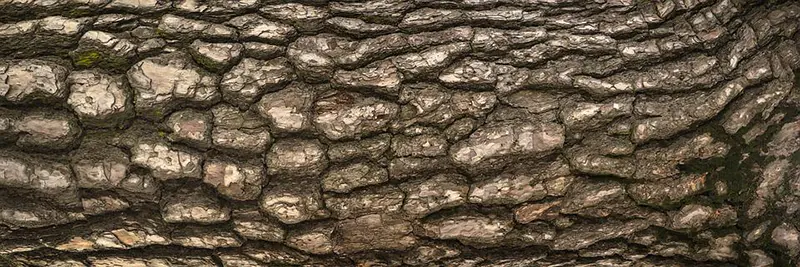How to Identify Pine Trees
Few things in nature are more beautiful than a pine tree forest on the mountainside. Add a lake or river, and you have the perfect picture. With over 126 species of pine trees worldwide, do you know how to identify pine trees while looking at them?
Pine trees are from the family of Pinaceae. The genus is Pinus. They are related to conifers like firs, cedars, and spruces because they are also evergreen coniferous trees. How do they differ from conifers and between the species? Let’s have a look at how to identify pine trees in nature:
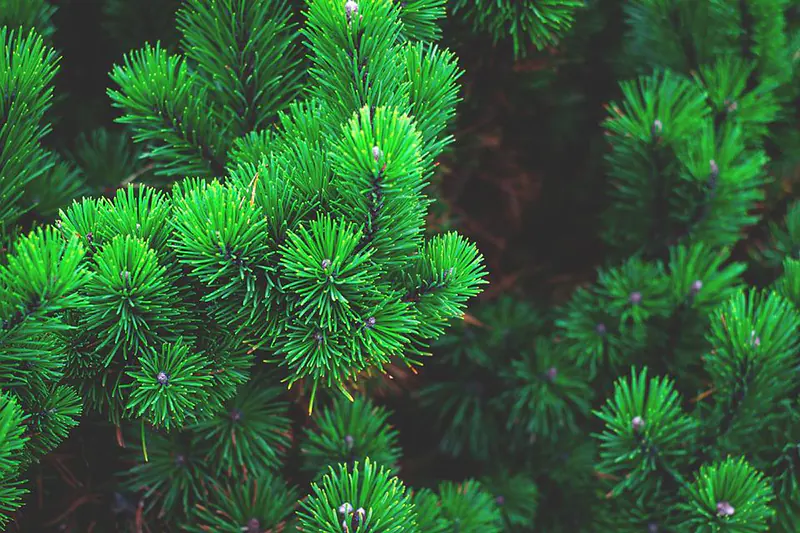
Identifying a Pine Tree
Pine trees grow primarily upright, with their branches growing straight and up. What would Christmas be without a pine tree to put your gifts under? They have beautiful egg-shaped seed-bearing cones and long evergreen needles in the place of leaves. Different species of pine trees have different needles on the branches, cones that are seedbearing, and the colors of the bark.
By looking at the needles, cones, and bark, you can determine what pine tree species you are looking at. Inspecting the needles and cones will also tell you if it is a pine tree or a conifer, as they have different needles and cones.
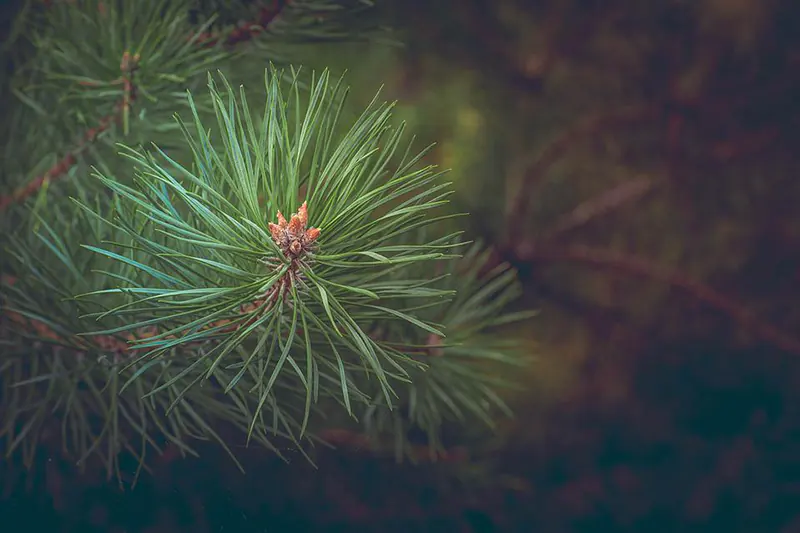
Steps for How to Identify Pine Trees
Identifying your pine tree can be done by looking at three tree parts. These parts are the needles on the branches, the cones on the branches, and the tree’s bark. Let’s have a look at how these three parts of the tree can help you to identify your pine tree:
Step 1: Study the Needles On the Branches
You can learn a lot about your pine tree by looking at the needle-like leaves.
- The big difference between a pine tree and a conifer is that the needles on a pine tree are hard and rounded, and they grow in clusters. The needles on conifers like firs, cedar, and spruce, are softer, flat, and are singularly attached to the branches.
- The cluster of needles on pine trees is called fascicles. Pine trees can get identified with the number of needles in the fascicle. A pine tree can have any number of two, three, five, or seven needles in a fascicle. The white pine species has got five needles in a fascicle. Red pine species have two needles in a fascicle, and the yellow pine has three needles.
- The length of the needles is also used to identify a pine tree. The longest needle belongs to the longleaf pine, and it measures 18 inches long. The pine tree with the shortest needles is the foxtail pine, with its needle only measuring one inch long.
- You can also identify a pine tree by the hardness of the needles. Five-needle fascicles usually are softer than the needles on a two or three needle one. Examples of softer needle pines are the western and eastern white pine and the Japanese white pine. The red pine, ponderosa pine, and jack pine have more rigid needle pines.
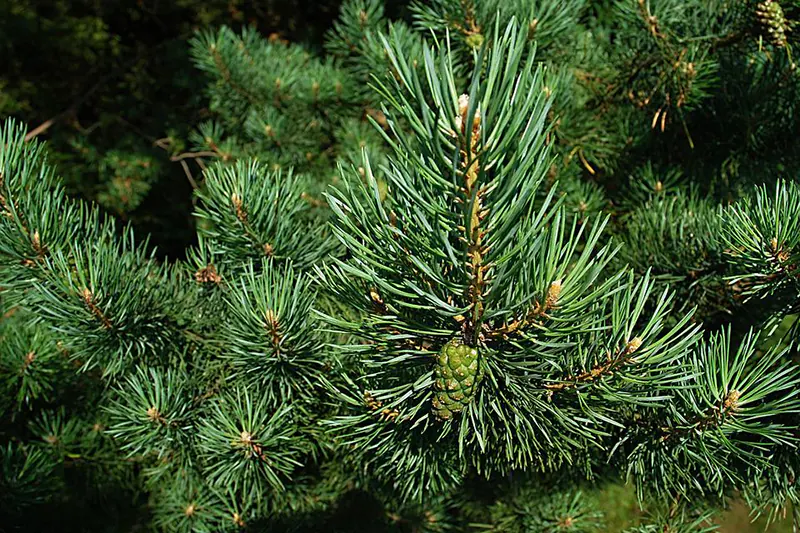
Step 2: Study the Cones On the Branches
The cones on the branches of pine trees contain the reproductive structures. Male and female cones are found on the same tree. The male cone produces pollen and is typically found on the tree’s lower branches so that the pollen doesn’t fall on the female cones.
Male cones are smaller, and their scales are closed. Cones can be ovoid to globular in shape. The cones also house the seeds of the pine tree for reproduction. By inspecting the shape and size of the cone, you can determine the pine species.
- The telling tale between a conifer and a pine tree is that a pine tree’s cones hang down from the branches, and with a conifer, the cones sit on top of the branches.
- You can determine the species of pine trees by looking at the conical or cylindrical woody cones. The Coulter pine cone is the largest. This big ovoid scaly cone can weigh up to 11 pounds and measure up to 16 inches long.
- The pinyon pine tree has a globose shape with proportionally large scales. Their size is up to two inches small. This pine tree produces tasty nuts that you can eat.
- The Monterey pine tree is famous because its woody scales have recurved tips. The cones are up to six inches long.
- Lodgepole pine trees have slender egg-shaped cones up to three inches long. The cones have stunning orange to red and tan colors.
- Bristlecone pine trees have bristle-like spines on the cones, which open up to be two inches wide.
- The Eastern White pine cones are slender and cylindrical. They are light in color, grow up to six inches long, and have fewer but big open scales.
- The Ponderosa pine tree cones are small to medium-sized and beautiful dark-brown color.
- The mountain pine tree has barrel-shaped cones. They grow up to two inches long. The cones’ scales are thin, flat, and triangular.
- The red pine tree has cones that are egg-shaped and red to brown. Open cones grow up to two and a half inches long.
- The jack pine tree has very strange-looking cones. They have a curved tip when they are closed and are smooth with a yellow to grey color.
Step 3: Study the Color Of the Bark
The color of the bark of most pine trees is reddish-brown. Some pine tree species, however, have grey color bark. Here are some of the distinguishing colors of the bark on pine trees:
- The red pine gets its name from the red color of its bark.
- The gray pine tree gets its name from the gray color of its bark. The grey pine tree is native to North America.
- The Scots pine tree has thick, scaly brown bark.
- The bristlecone pine tree has grayish-brown bark. The bristlecone pine has an attractive orange color bark.
- The ponderosa pine tree or yellow pine has an extremely long trunk, and the bark is a fantastic orange-red bark.
- The Coulter pine is a very large pine with reddish-brown bark.
- Whitebark pine trees grow on the highest elevations, and their name is derived from the whitish color of the bark.
- The pond pine tree has a crooked stem and branches with dark-colored bark in tones of red to brown.
- The spruce pine tree has dark-brown to gray bark.
- As the name suggests, the Japanese black pine has got black bark.
Step 4: Study the Height and Shape Of the Mature Tree
By studying the mature tree’s height, you can determine what the pine tree species is. Different pine tree species grow to different heights when they mature. They also have different growing patterns. Let’s have a look at the different species of pine trees:
- Eastern white pine trees grow very tall. They can grow up to 230 feet high.
- The western pine tree is not as tall and reaches 160 feet when mature.
- Red pine trees have a tall, straight trunk that grows to 115 feet tall.
- The gray pine tree is one of the smaller pines growing up to 45 feet tall.
- The pitch pine tree has an irregular shape and twisted branches, making it a popular Bonsai specimen. They can reach up to 90 feet in height when mature.
- Scots pine trees tend to have a forked trunk and reach heights of 120 feet.
- Jack pines have an irregular shape and grow up to 72 feet in height.
- Longleaf pine trees have tall, slender trunks that can reach 120 feet.
- Shortleaf pine trees grow up to 90 feet when mature.
- Bristlecone pine trees are a smaller species and can reach heights of 20 feet.
- The Ponderosa pine tree is a huge specimen that can grow up to 235 feet.
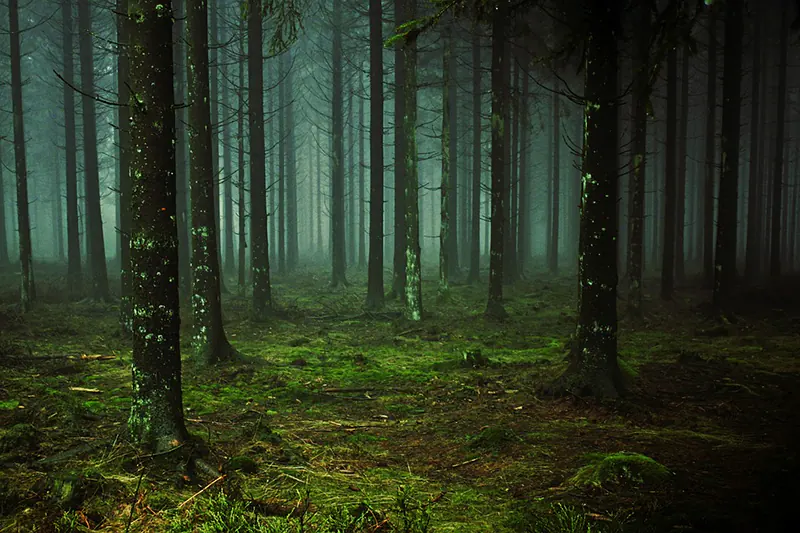
Step 5: Study the Location and Soil In Which the Tree Grows
The location and soil in which the pine tree grows can also help identify the species. Certain species only grow in cold regions like North America. Other pine trees are very happy in the rainforest, and others grow in hot sandy deserts. Let’s look at some examples:
- The eastern white pine loves the warmer climate of south-eastern America.
- The western pine likes the cold of North-West America.
- Pond pine trees like a warmer climate and like the wet woodlands.
- The gray pine is a native North American pine tree.
- Pitch pines are hardier and can grow in a variety of climates.
- Short leaf pine trees are happiest in the warmer Southern American climate.
- Bristlecone pine trees can grow in different climate zones. You can find them in the cold Rocky Mountains and the hot Arizona desert.
- Loblolly pines grow in swampy, acidic soil.
- The sand pine tree is happy in sandy soil in warmer regions.
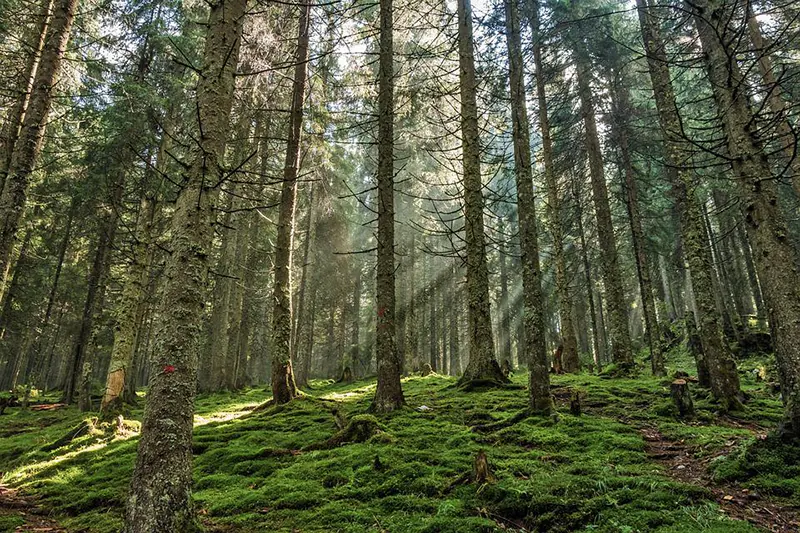
What Pine Is It?
Let’s have a look at some of the popular questions people have when trying to identify a pine tree:
Is it a conifer or a pine?
One of the most common mistakes people make is thinking a conifer is pine or vice versa. I certainly hope that I could help you identify the pine tree for what it is. You now know it is a quick and simple check to identify a pine tree by looking at the needles or cones, or trunks. A single, soft and flat needle belongs to a conifer. Cones on top of a branch belong to a conifer.
What is the difference between white pine and a red pine?
The same applies to the popular question of how you distinguish between white pine and red pine. The easiest way to identify the pine is to look at the color of the bark. The white pine’s bark is whitish, and the red pine has got deep red bark.
Can you distinguish pine trees by looking at the needles?
You can identify pine trees just by their needles. The number of needles in the fascicles of pine tree species can be different. Red pine has two needles, white pine has five needles, and yellow pine has three.
I Have a Mature Pine Tree In My Garden. Is It a Red Pine Or Gray Pine?
Red pine trees have a tall, straight trunk that grows up to 115 feet tall. The gray pine tree is one of the smaller pines growing up to 45 feet tall.
Can you tell if it is a red pine or white pine by looking at the cones?
The cones of pine tree species are different in size and shape. The red pine tree has cones that are egg-shaped and red to brown in color. Open cones grow up to two and a half inches long. The Eastern White pine cones are whitish, slender, and cylindrical. They can grow up to six inches long and have fewer but big open scales.
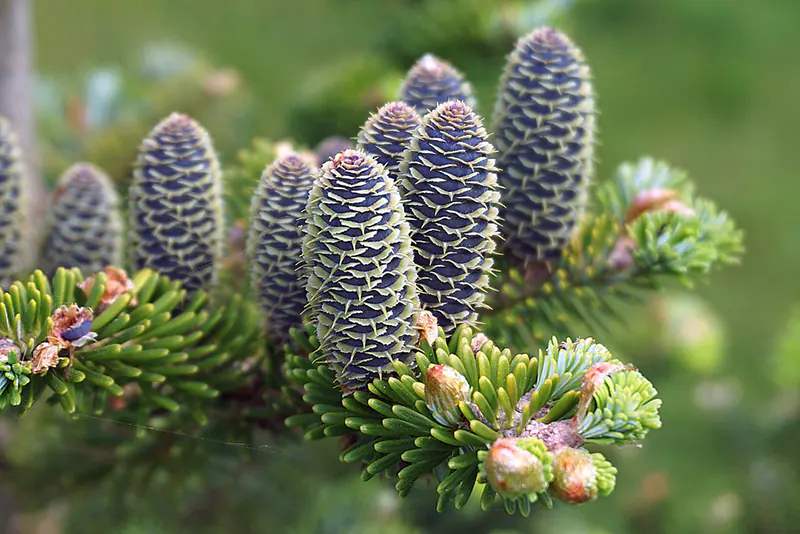
Final Thoughts
It is a lot easier to identify species of pine trees than you think. There are many pine tree species, but studying the needles, cones, and color of the bark on a tree can give you all the information you need to identify the pine tree species successfully. In nature, you can also use the mature tree’s height, the area where it is growing, and the soil it is growing in to help you identify the pine tree.



